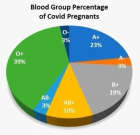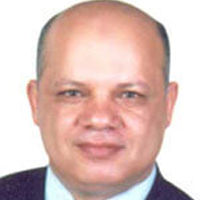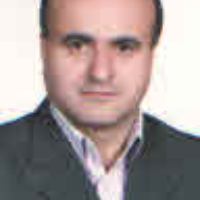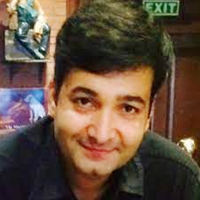Abstract
Mini Review
Physical activity can change the physiological and psychological circumstances during COVID-19 pandemic: A narrative review
Khashayar Maroufi*
Published: 26 January, 2021 | Volume 6 - Issue 1 | Pages: 001-007
Background: With the outbreak of Coronavirus disease 2019 (COVID-19), many studies’ attention to this world’s complexity increased dramatically. Different views on sports and physical activities have been presented, which have addressed the advantages and disadvantages of sports activities in this period differently. The purpose of this review was to investigate the physiological and psychological effects of physical activity during the COVID-19 pandemic.
Methods: Using PubMed, Science Direct, Medline, and Web of Science electronic databases, this review summarizes the current knowledge of direct and indirect effects of physical activity during the COVID-19 pandemic, evaluating the advantages and drawbacks of specific exercise physiology conditions. All types of studies were assessed, including systematic reviews, case-studies, and clinical guidelines. The literature search identified 40 articles that discussed COVID-19, immune system, the relation between immune system and exercise or diet, and psychological impacts of physical activity.
Results: Forty articles review showed that the immune system depends on the type, frequency, intensity, and duration of the exercise.
Intense or prolonged exercise with short recovery periods can progressively weaken the immune system and increase the risk of COVID-19. One of the acute responses after moderate-intensity training is improved immune function and a decrease in inflammatory cytokines. Paying attention to dietary intakes of micro-and macronutrients in conjunction with exercise can strengthen the condition to fight against coronavirus. Exercise can also affect the psychological dimensions of the COVID-19 pandemic, including depression, anxiety, and stress, which improve community mental health during the quarantine.
Conclusion: Setting appropriate physical activity based on individuals’ properties and proper diet plan may enhance the physiological and psychological body’s condition to fight against coronavirus.
Read Full Article HTML DOI: 10.29328/journal.jsmt.1001051 Cite this Article Read Full Article PDF
Keywords:
COVID-19; Inflammation; Physical activity; Exercise physiology; Exercise psychology
References
- Wang M, Baker JS, Quan W, Shen S, Fekete G, et al. A preventive role of exercise across the coronavirus 2 (SARS-CoV-2) pandemic. Front Physiol. 2020; 11: 572718. PubMed: https://www.ncbi.nlm.nih.gov/pmc/articles/PMC7506115
- Hu S, Tucker L, Wu C, Yang L. Beneficial effects of exercise on depression and anxiety during the Covid-19 pandemic: A narrative review. Front Psychiatry. 2020; 11: 1217. PubMed: https://pubmed.ncbi.nlm.nih.gov/33329133
- Zadow EK, Wundersitz DWT, Hughes DL, Adams MJ, Kingsley MIC, et al., editors. Coronavirus (COVID-19), Coagulation, and Exercise: Interactions That May Influence Health Outcomes. Semin Thromb Hemost. 2020; 46: 807-814. PubMed: https://pubmed.ncbi.nlm.nih.gov/32882720
- Chiappetta S, Sharma AM, Bottino V, Stier C. COVID-19 and the role of chronic inflammation in patients with obesity. International J Obes. 2020:1-3.
- Kalligeros M, Shehadeh F, Mylona EK, Benitez G, Beckwith CG, et al. Association of obesity with disease severity among patients with coronavirus disease 2019. Obesity. 2020; 28: 1200-1204. PubMed: https://pubmed.ncbi.nlm.nih.gov/32352637
- Mattioli AV, Sciomer S, Cocchi C, Maffei S, Gallina S. Quarantine during COVID-19 outbreak: changes in diet and physical activity increase the risk of cardiovascular disease. Nutr Metab Cardiovasc Dis. 2020; 30: 1409-1417. PubMed: https://pubmed.ncbi.nlm.nih.gov/32571612
- Nishimura H, Itamura S, Iwasaki T, Kurata T, Tashiro M. Characterization of human influenza A (H5N1) virus infection in mice: neuro-, pneumo-and adipotropic infection. J Gen Virol. 2000; 81: 2503-2510. PubMed: https://pubmed.ncbi.nlm.nih.gov/10993940
- Sallis JF, Pratt M, Sallis JF. Multiple benefits of physical activity during the Coronavirus pandemic. Rev Bras Rev Bras Ativ Fís Saúde. 2020; 25: 1-5.
- Meneses-Echávez JF, Correa-Bautista JE González-Jiménez E, Río-Valle JS, Elkins MR, et al. The effect of exercise training on mediators of inflammation in breast cancer survivors: a systematic review with meta-analysis. Cancer Epidemiol Biomarkers Prev. 2016; 25: 1009-1017. PubMed: https://pubmed.ncbi.nlm.nih.gov/27197276
- Neto JR, Lira F, De Mello M, Santos RVT. Importance of exercise immunology in health promotion. Amino Acids. 2011; 41: 1165-1172. PubMed: https://pubmed.ncbi.nlm.nih.gov/20976509
- Kizaki T, Takemasa T, Sakurai T, Izawa T, Hanawa T, et al. Adaptation of macrophages to exercise training improves innate immunity. Biochem Biophys Res Commun. 2008; 372: 152-156. PubMed: https://pubmed.ncbi.nlm.nih.gov/18474227
- Henry BM, De Oliveira MHS, Benoit S, Plebani M, Lippi G. Hematologic, biochemical and immune biomarker abnormalities associated with severe illness and mortality in coronavirus disease 2019 (COVID-19): a meta-analysis. Clin Chem Lab Med. 2020; 58: 1021-1028. PubMed: https://pubmed.ncbi.nlm.nih.gov/32286245
- Powell KE, King AC, Buchner DM, Campbell WW, DiPietro L, et al. The Scientific Foundation for the Physical Activity. J Phys Act Health. 2019; 16: 1-11. PubMed: https://pubmed.ncbi.nlm.nih.gov/30558473
- Molanouri Shamsi M, Amani Shalamzari S. Exercise Training, Immune System, and Coronavirus. Sport Physiology. 2020; 12: 17-40.
- Naja F, Hamadeh R. Nutrition amid the COVID-19 pandemic: a multi-level framework for action. Eur J Clin Nutr. 2020; 74: 1117-1121. PubMed: https://pubmed.ncbi.nlm.nih.gov/32313188
- Laviano A, Koverech A, Zanetti M. Nutrition support in the time of SARS-CoV-2 (COVID-19). Nutrition. 2020; 74: 110834. PubMed: https://pubmed.ncbi.nlm.nih.gov/32276799
- Letieri RV, Furtado GE. Physical exercise during coronavirus disease (COVID-19): Recommendations to remaining active in periods of confinement. Anais da Academia Brasileira de Ciências. 2020; 92.
- Shi Y, Wang Y, Shao C, Huang J, Gan J, et al. COVID-19 infection: the perspectives on immune responses. Nature Publishing Group; 2020. PubMed: https://pubmed.ncbi.nlm.nih.gov/32205856
- Shirvani H, Rostamkhani F. Exercise considerations during coronavirus disease 2019 (COVID-19) Outbreak: A narrative review. J Military Med. 2020; 22: 161-168.
- Yousfi N, Bragazzi NL, Briki W, Zmijewski P, Chamari K. The COVID-19 pandemic: how to maintain a healthy immune system during the lockdown-a multidisciplinary approach with special focus on athletes. Biol Sport. 2020; 37: 211-216. PubMed: https://pubmed.ncbi.nlm.nih.gov/32879542
- Gleeson M, Nieman DC, Pedersen BK. Exercise, nutrition and immune function. J Sports Sci. 2004; 22: 115-125. PubMed: https://pubmed.ncbi.nlm.nih.gov/14971437
- Pedersen BK, Bruunsgaard H, Jensen M, Toft AD, Hansen H, et al. Exercise and the immune system-influence of nutrition and ageing. J Sci Med Sport. 1999; 2: 234-252.
- Verma S, Mishra A. Depression, anxiety, and stress and socio-demographic correlates among general Indian public during COVID-19. Int J Soc Psychiatry. 2020; 66: 756-762. PubMed: https://pubmed.ncbi.nlm.nih.gov/32567466
- Kodama S, Saito K, Tanaka S, Maki M, Yachi Y, et al. Cardiorespiratory fitness as a quantitative predictor of all-cause mortality and cardiovascular events in healthy men and women: a meta-analysis. JAMA. 2009; 301: 2024-2035. PubMed: https://pubmed.ncbi.nlm.nih.gov/19454641
- Simpson RJ, Cosgrove C, Ingram LA, Florida-James GD, Whyte GP, et al. Senescent T-lymphocytes are mobilised into the peripheral blood compartment in young and older humans after exhaustive exercise. Brain Behavior Immunity. 2008; 22: 544-551.
- Simpson RJ, Lowder TW, Spielmann G, Bigley AB, LaVoy EC, et al. Exercise and the aging immune system. Ageing Res Rev. 2012; 11: 404-420. PubMed: https://pubmed.ncbi.nlm.nih.gov/22465452
- Chan KK, Dorosky D, Sharma P, Abbasi SA, Dye JM, et al. Engineering human ACE2 to optimize binding to the spike protein of SARS coronavirus 2. Science. 2020; 369: 1261-1265. PubMed: https://pubmed.ncbi.nlm.nih.gov/32753553
- Poirier P, Després JP. Exercise in weight management of obesity. Cardiol Clin. 2001; 19: 459-470. PubMed: https://pubmed.ncbi.nlm.nih.gov/11570117
- Martin CK, Johnson WD, Myers CA, Apolzan JW, Earnest CP, et al. Effect of different doses of supervised exercise on food intake, metabolism, and non-exercise physical activity: The E-MECHANIC randomized controlled trial. Am J Clini Nutr. 2019; 110: 583-592. PubMed: https://pubmed.ncbi.nlm.nih.gov/31172175
- Church TS, Earnest CP, Skinner JS, Blair SN. Effects of different doses of physical activity on cardiorespiratory fitness among sedentary, overweight or obese postmenopausal women with elevated blood pressure: a randomized controlled trial. JAMA. 2007; 297: 2081-2091. PubMed: https://pubmed.ncbi.nlm.nih.gov/17507344
- Church TS, Earnest CP, Thompson AM, Priest E, Rodarte RQ, et al. Exercise without weight loss does not reduce C-reactive protein: the INFLAME study. Med Sci Sports Exerc. 2010; 42: 708-716. PubMed: https://pubmed.ncbi.nlm.nih.gov/19952828
- Gaertner F, Massberg S, editors. Blood coagulation in immunothrombosis--At the frontline of intravascular immunity. Semin Immunol. 2016; 28: 561-569. PubMed: https://pubmed.ncbi.nlm.nih.gov/27866916
- Lippi G, Sanchis-Gomar F, Henry BM. Coronavirus disease 2019 (COVID-19): the portrait of a perfect storm. Ann Transl Med. 2020; 8: 497. PubMed: https://pubmed.ncbi.nlm.nih.gov/32395541
- Swift DL, McGee JE, Earnest CP, Carlisle E, Nygard M, et al. The effects of exercise and physical activity on weight loss and maintenance. Prog Cardiovasc Dis. 2018; 61: 206-213. PubMed: https://pubmed.ncbi.nlm.nih.gov/30003901
- Maroufi K, Razavi R, Gaeini AA, Nourshahi M. The effects of acute consumption of carbohydrate-protein supplement in varied ratios on CrossFit athletes’ performance in two CrossFit exercises: a randomized cross-over trial. J Sports Med Phys Fitness. 2020. PubMed: https://pubmed.ncbi.nlm.nih.gov/33314886
- Bushman B, Medicine ACoS. ACSM’s Complete Guide to Fitness & Health, 2E: Human Kinetics; 2017.
- Camargo-Junior F, Chalhub T, Moraes Filho JMd, Santos R, Feitosa F, et al. Covid-19 and its effect on olympic sport: the importance of studying social isolation and the harm it causes, in order to minimize it. Revista Brasileira de Medicina do Esporte. 2020; 26: 371-377.
- Smith LL. Overtraining, excessive exercise, and altered immunity. Sports Med. 2003; 33: 347-364. PubMed: https://pubmed.ncbi.nlm.nih.gov/12696983/
- Xie B, Yan X, Cai X, Li J. Effects of high-intensity interval training on aerobic capacity in cardiac patients: a systematic review with meta-analysis. BioMed Res Int. 2017; 2017. PubMed: https://pubmed.ncbi.nlm.nih.gov/28386556
- Iddir M, Brito A, Dingeo G, Fernandez Del Campo SS, Samouda H, et al. Strengthening the immune system and reducing inflammation and oxidative stress through diet and nutrition: considerations during the COVID-19 crisis. Nutrients. 2020; 12: 1562. PubMed: https://pubmed.ncbi.nlm.nih.gov/32471251
- Venkatraman JT, Pendergast DR. Effect of dietary intake on immune function in athletes. Sports Med. 2002; 32: 323-337. PubMed: https://pubmed.ncbi.nlm.nih.gov/11929359
- Larson-Meyer DE, Willis KS. Vitamin D and athletes. Curr Sports Med Rep. 2010; 9: 220-226. PubMed: https://pubmed.ncbi.nlm.nih.gov/20622540
- Alexander J, Tinkov A, Strand TA, Alehagen U, Skalny A, et al. Early nutritional interventions with zinc, selenium and vitamin D for raising anti-viral resistance against progressive COVID-19. Nutrients. 2020; 12: 2358. PubMed: https://pubmed.ncbi.nlm.nih.gov/32784601
- Grant WB, Lahore H, McDonnell SL, Baggerly CA, French CB, et al. Evidence that vitamin D supplementation could reduce risk of influenza and COVID-19 infections and deaths. Nutrients. 2020; 12: 988. PubMed: https://pubmed.ncbi.nlm.nih.gov/32252338
- de Lima CVC, Cândido EL, da Silva JA, Albuquerque LV, de Menezes Soares L, et al. Effects of quarantine on mental health of populations affected by Covid-19. Journal of affective disorders. 2020; 275: 253-254. PubMed: https://pubmed.ncbi.nlm.nih.gov/32734916
- Li W, Yang Y, Liu ZH, Zhao YJ, Zhang Q, et al. Progression of mental health services during the COVID-19 outbreak in China. Int J Biol Sci. 2020; 16: 1732-1738. PubMed: https://www.ncbi.nlm.nih.gov/pmc/articles/PMC7098037
- Casagrande M, Favieri F, Tambelli R, Forte G. The enemy who sealed the world: Effects quarantine due to the COVID-19 on sleep quality, anxiety, and psychological distress in the Italian population. Sleep Med. 2020; 75: 12-20. PubMed: https://pubmed.ncbi.nlm.nih.gov/32853913
- Martinsen EW. Physical activity in the prevention and treatment of anxiety and depression. Nord J Psychiatry. 2008; 62(sup47): 25-29. PubMed: https://pubmed.ncbi.nlm.nih.gov/18752115
- Conn VS. Anxiety outcomes after physical activity interventions: meta-analysis findings. Nurs Res. 2010; 59: 224-231. PubMed: https://pubmed.ncbi.nlm.nih.gov/20410849
- Nagata S, McCormick BP, Austin DR. Physical Activity as Treatment for Depression in Recreation Therapy: Transitioning from Research to Practice. Therapeu Recreat J. 2020; 54.
- Divya Mary S, Kirupa K, Vaishnavi G, Yamuna K, Revathi P, et al. Effects of total body workout in women with mild-to-moderate clinical depression. Drug Invention Today. 2019; 11.
- Vosadi E, Ravasi AA, Choobine S, Barzegar H, Borjianfard M. Effect of endurance training and omega-3 supplementation in brain-derived neurotrophic factor (BDNF) in male adult rat hippocampus. Razi J Med Sci. 2013; 20: 50-57.
- Maugeri G, Castrogiovanni P, Battaglia G, Pippi R, D’Agata V, et al. The impact of physical activity on psychological health during Covid-19 pandemic in Italy. Heliyon. 2020; 6: e04315. PubMed: https://www.ncbi.nlm.nih.gov/pmc/articles/PMC7311901
Figures:
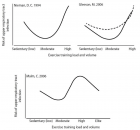
Figure 1
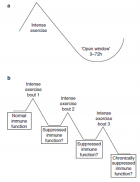
Figure 2
Similar Articles
-
Physical activity can change the physiological and psychological circumstances during COVID-19 pandemic: A narrative reviewKhashayar Maroufi*. Physical activity can change the physiological and psychological circumstances during COVID-19 pandemic: A narrative review. . 2021 doi: 10.29328/journal.jsmt.1001051; 6: 001-007
-
Translating an Evidence-Based Physical Activity Service From Context To Context: A Single Organizational Case StudyMarie-Eve Lamontagne,Kelly P Arbour-Nicitopoulos,Jennifer R Tomasone,Isabelle Cummings,Amy E Latimer-Cheung,François Routhier*. Translating an Evidence-Based Physical Activity Service From Context To Context: A Single Organizational Case Study. . 2017 doi: 10.29328/journal.jsmt.1001007; 2: 039-050
-
Active gaming and self-paced exercise: A self-determination perspectiveDanielle D Wadsworth*,Colleen M Daly,Shelby J Foote. Active gaming and self-paced exercise: A self-determination perspective. . 2018 doi: 10.29328/journal.jsmt.1001026; 3: 043-052
-
The influence of physical activities on biological age parameters of females from 17 to 18 years oldDao Chanh Thuc*. The influence of physical activities on biological age parameters of females from 17 to 18 years old. . 2018 doi: 10.29328/journal.jsmt.1001030; 3: 075-079
-
Role of physical activity in cancer survival and recurrence: A narrative review from relationship evidence to crucial research perspectivesJ Maury,P Senesse,G Ninot*. Role of physical activity in cancer survival and recurrence: A narrative review from relationship evidence to crucial research perspectives. . 2018 doi: 10.29328/journal.jsmt.1001034; 3: 102-117
-
Cannabinoids as a yield modifier in physical activit: A systematic review charactersLeonardo Tibiriçá Corrêa,Juliana Weckx Peña Muñoz,Beatriz do Prado Pacca Faria,Jeferson Santana,Leandro Yanase,EstherLopes Ricci,Lorena de Paula Pantaleon,Leonardo Ribeiro de Paula,Guilherme Mendes Ribeiro,Vinicius Barroso Hirota,André Rinaldi Fukushima*. Cannabinoids as a yield modifier in physical activit: A systematic review characters. . 2021 doi: 10.29328/journal.jsmt.1001053; 6: 018-021
-
Effectiveness of physical rehabilitation on sphygmography and blood pressureGrashchenkova АN*,Puzin SN,Bogova ОТ. Effectiveness of physical rehabilitation on sphygmography and blood pressure. . 2023 doi: 10.29328/journal.jsmt.1001063; 8: 001-003
-
Is there a Place for Klotho in Alzheimer’s disease?Maria Isabel Saiz-Figuerez, Nava E, Galindo MF and Joaquin Jordan*. Is there a Place for Klotho in Alzheimer’s disease?. . 2024 doi: 10.29328/journal.jsmt.1001074; 9: 001-010
Recently Viewed
-
FITT-CORRECT: Updated dynamic and evidence-based principle of exercise prescriptionShambhu P Adhikari*,Jarugool Tretriluxana,Rubee Dev,Emily Eglitis,Nistha Shrestha,Cheryl Kerfeld6. FITT-CORRECT: Updated dynamic and evidence-based principle of exercise prescription. J Nov Physiother Rehabil. 2021: doi: 10.29328/journal.jnpr.1001039; 5: 005-009
-
Unusual cause of parietal thoracic pain: A case reportMohamed Labied*,Hayat Lhajoui,Najwa Touil,Omar Kacimi,Nabil Chikhaoui . Unusual cause of parietal thoracic pain: A case report. Arch Case Rep. 2020: doi: 10.29328/journal.acr.1001040; 4: 046-047
-
Zn2+ Ions-Immune Virucidal activities for children and adults with preventions against 2019-nCoV and COVID-19 infectionTsuneo Ishida*. Zn2+ Ions-Immune Virucidal activities for children and adults with preventions against 2019-nCoV and COVID-19 infection. J Child Adult Vaccines Immunol. 2020: doi: 10.29328/journal.jcavi.1001006; 4: 006-014
-
Exophthalmos Revealing a Spheno Temporo Orbital MeningiomaHassina S*, Krichene MA, Hazil Z, Bekkar B, Hasnaoui I, Robbana L, Bardi S, Akkanour Y, Serghini L, Abdallah EL. Exophthalmos Revealing a Spheno Temporo Orbital Meningioma. Int J Clin Exp Ophthalmol. 2024: doi: 10.29328/journal.ijceo.1001055; 8: 001-003
-
Unveiling the Impostor: Pulmonary Embolism Presenting as Pneumonia: A Case Report and Literature ReviewSaahil Kumar,Karuna Sree Alwa*,Mahesh Babu Vemuri,Anumola Gandhi Ganesh Gupta,Nuthan Vallapudasu,Sunitha Geddada. Unveiling the Impostor: Pulmonary Embolism Presenting as Pneumonia: A Case Report and Literature Review. J Pulmonol Respir Res. 2025: doi: 10.29328/journal.jprr.1001065; 9: 001-005
Most Viewed
-
Evaluation of Biostimulants Based on Recovered Protein Hydrolysates from Animal By-products as Plant Growth EnhancersH Pérez-Aguilar*, M Lacruz-Asaro, F Arán-Ais. Evaluation of Biostimulants Based on Recovered Protein Hydrolysates from Animal By-products as Plant Growth Enhancers. J Plant Sci Phytopathol. 2023 doi: 10.29328/journal.jpsp.1001104; 7: 042-047
-
Sinonasal Myxoma Extending into the Orbit in a 4-Year Old: A Case PresentationJulian A Purrinos*, Ramzi Younis. Sinonasal Myxoma Extending into the Orbit in a 4-Year Old: A Case Presentation. Arch Case Rep. 2024 doi: 10.29328/journal.acr.1001099; 8: 075-077
-
Feasibility study of magnetic sensing for detecting single-neuron action potentialsDenis Tonini,Kai Wu,Renata Saha,Jian-Ping Wang*. Feasibility study of magnetic sensing for detecting single-neuron action potentials. Ann Biomed Sci Eng. 2022 doi: 10.29328/journal.abse.1001018; 6: 019-029
-
Physical activity can change the physiological and psychological circumstances during COVID-19 pandemic: A narrative reviewKhashayar Maroufi*. Physical activity can change the physiological and psychological circumstances during COVID-19 pandemic: A narrative review. J Sports Med Ther. 2021 doi: 10.29328/journal.jsmt.1001051; 6: 001-007
-
Pediatric Dysgerminoma: Unveiling a Rare Ovarian TumorFaten Limaiem*, Khalil Saffar, Ahmed Halouani. Pediatric Dysgerminoma: Unveiling a Rare Ovarian Tumor. Arch Case Rep. 2024 doi: 10.29328/journal.acr.1001087; 8: 010-013

HSPI: We're glad you're here. Please click "create a new Query" if you are a new visitor to our website and need further information from us.
If you are already a member of our network and need to keep track of any developments regarding a question you have already submitted, click "take me to my Query."











